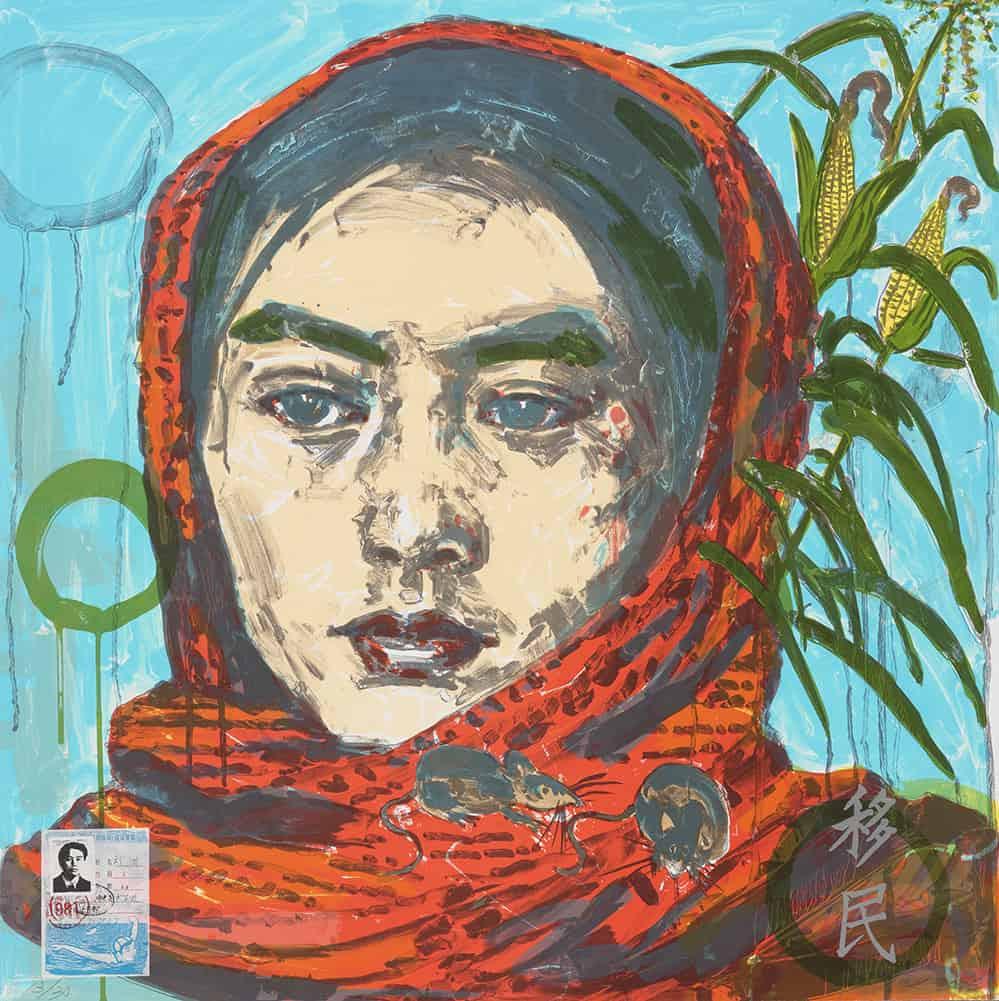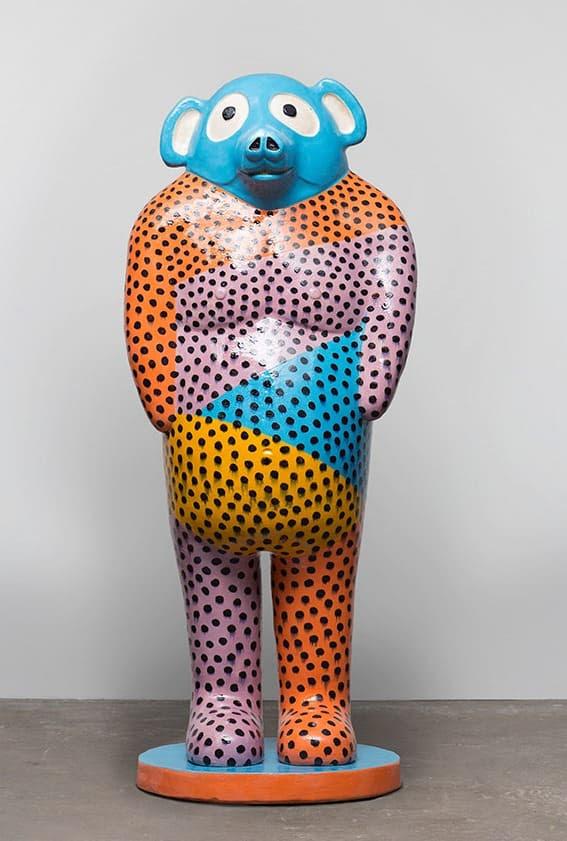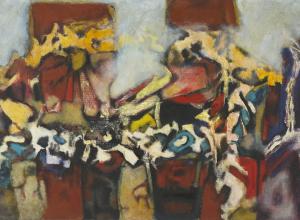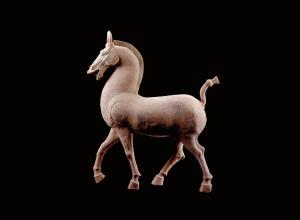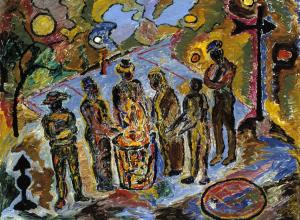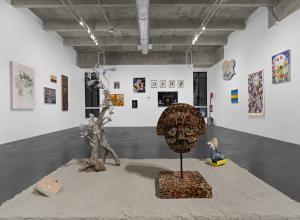Moving Stories brings together powerful works that reflect on the experiences of migration, both within Asia and beyond. Dinh Q. Lê (b. 1968) appropriates and masks iconic images of the Vietnam War. Hung Liu (1948–2021) also finds inspiration in historical photographs, reinterpreting the genre of portraiture through the lens of displaced and voluntary immigrants. Roger Shimomura (b. 1939) borrows the visual language of Japanese woodblock prints and Pop art to render the lives of Japanese Americans incarcerated in internment camps during World War II. Do Ho Suh (b. 1962) and Rirkrit Tiravanjia (b. 1961) map their own diasporic trajectories, literally and metaphorically.
Asias Reinvented highlights two- and three-dimensional works that transform styles and motifs of traditional Asian art to engage, probe and critique contemporary popular culture and politics. The Pop- and manga-inflected fantasies of Takashi Murakami (b. 1962) and Mariko Mori (b. 1967) are rooted in both the artisanal heritages and the consumerist trends of Japan. Akio Takamori (1950–2017) and Patti Warashina (b. 1940) turn seemingly innocent motifs into uncanny portrayals of life, love and death. Manabu Ikeda (b. 1973) evokes Hokusai’s famous waves to create a surreal scene of planetary apocalypse.
The exhibition marks the first time in its fifty-year history that the Palmer Museum has partnered with Jordan Schnitzer and his foundation.
Support for the exhibition and related educational and outreach programs has been made possibly by a grant from the Jordan Schnitzer Family Foundation. Generous funding was also provided by Penn State’s Office of the Executive Vice President and Provost as part of the University’s Strategic Arts and Humanities Initiative and the George Dewey and Mary J. Krumrine Endowment.
Penn State’s Asian Studies department sponsors the Global Asias Initiative, which encompasses several interrelated projects that bring together scholarship in Asian Studies, Asian American Studies and Asian Diaspora Studies. The multi-disciplinary collaboration fostered by the initiative has resulted in an award-winning journal, Verge: Studies in Global Asias, the biennial Global Asias conference and the annual Global Asias Summer Institute.




